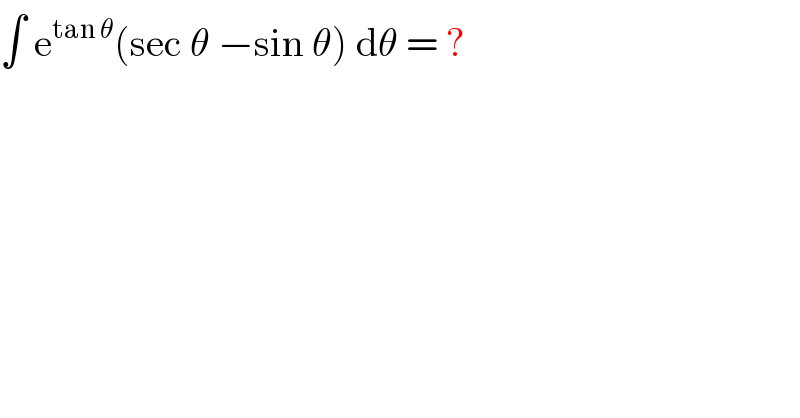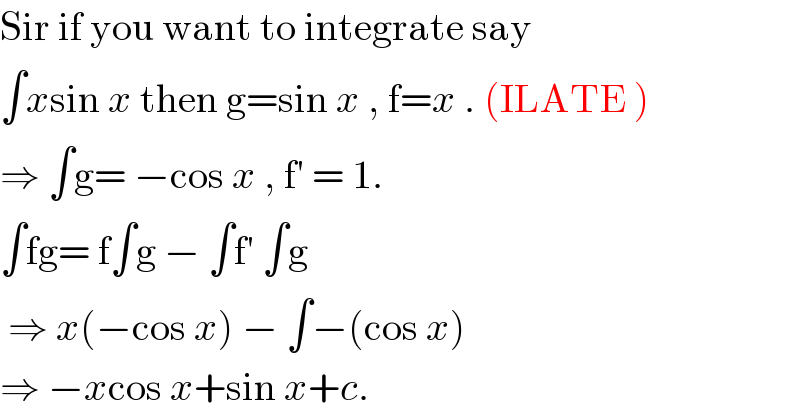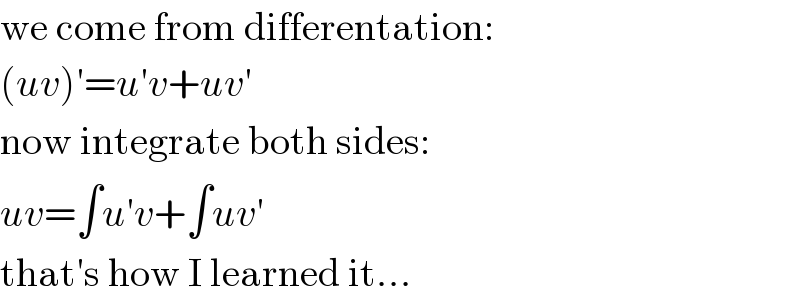
Question and Answers Forum
Question Number 36459 by rahul 19 last updated on 02/Jun/18

Answered by ajfour last updated on 02/Jun/18
![let tan θ=t ⇒ I=∫e^t (sec θ−sin θ)cos^2 θdt =∫e^t (cos θ−((sin θ)/(1+tan^2 θ)))dt =∫e^t ((1/(√(1+t^2 )))−(t/((1+t^2 )^(3/2) )))dt =∫e^t [(1/(√(1+t^2 )))+(d/dt)((1/(√(1+t^2 ))))]dt = (e^t /(√(1+t^2 )))+c I = e^(tan θ) cos θ +c .](Q36462.png)
Commented by rahul 19 last updated on 02/Jun/18
Thank you sir ����
Answered by MJS last updated on 02/Jun/18
![lol, tricky... ∫e^(tan θ) (sec θ−sin θ)dθ= =∫e^(tan θ) sec θ dθ−∫e^(tan θ) sin θ dθ= [((f′=sin θ ⇒ f=−cos θ)),((g=e^(tan θ) ⇒ g′=e^(tan θ) sec^2 θ)),((∫f′g=fg−∫fg′)) ] =∫e^(tan θ) sec θ dθ+e^(tan θ) cos θ−∫e^(tan θ) cos θ sec^2 θ dθ= =e^(tan θ) cos θ +C](Q36463.png)
Commented by rahul 19 last updated on 02/Jun/18

Commented by MJS last updated on 02/Jun/18

Commented by rahul 19 last updated on 02/Jun/18

Commented by MJS last updated on 02/Jun/18

Commented by rahul 19 last updated on 02/Jun/18

